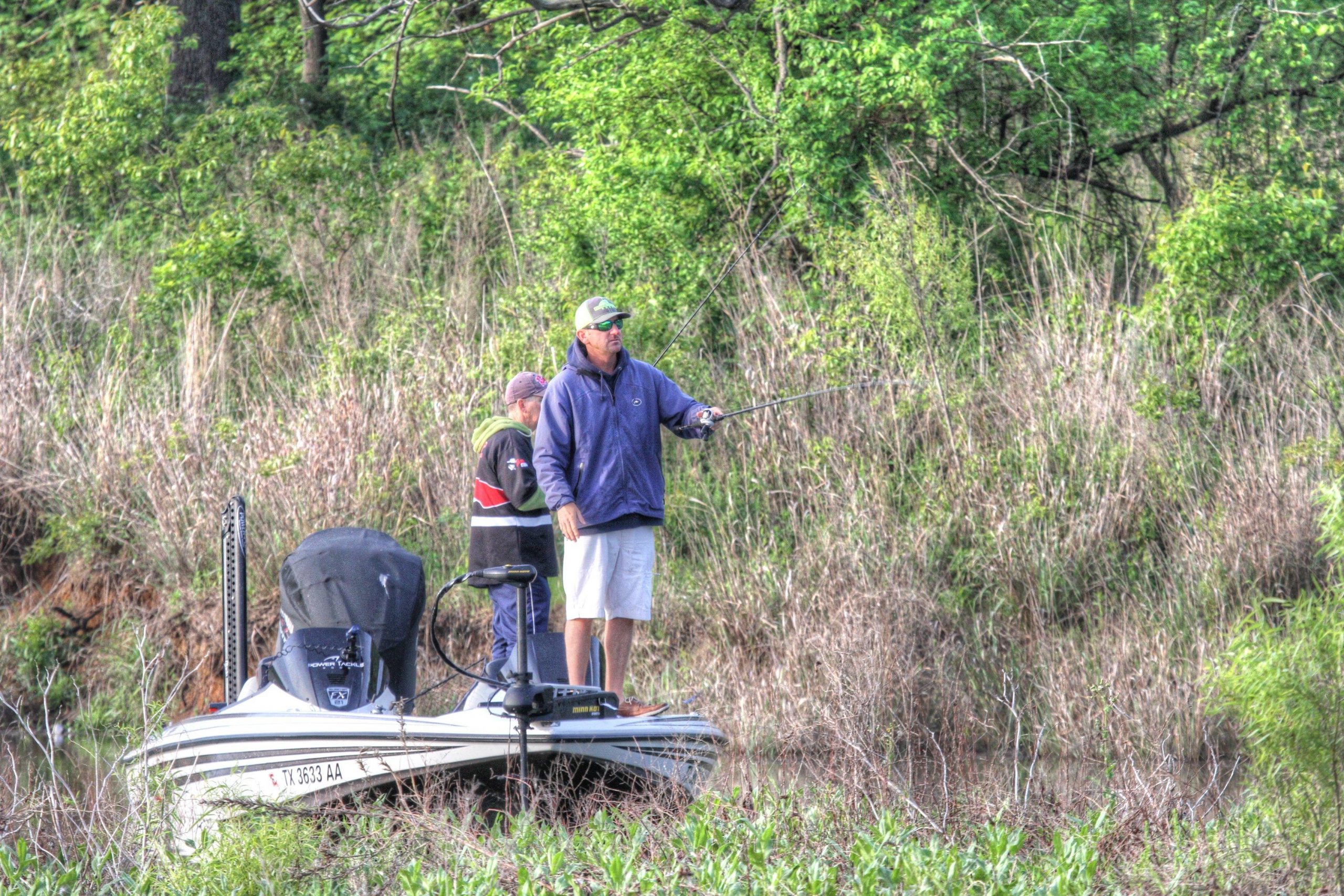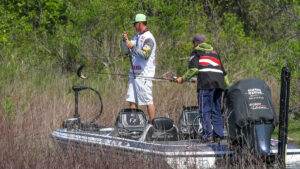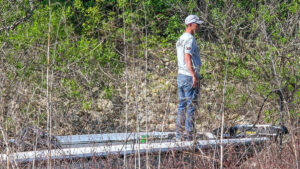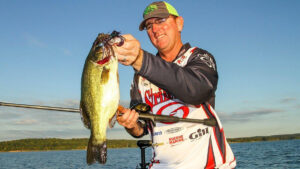From seasonal rains to snow melt, rising lake levels are part of nature’s hydrology. Sometimes, though, periods of concentrated influx see lake’s rapidly expanding into shoreline cover and thereby creating significant opportunities for bass anglers faced with finding high water bass.
No one knows this better than Texas guide/tournament pro Ray Hanselman, who dominated the 2015 Costa FLW Series Texas Division by sweeping the 3-event schedule before winning the overall Series Championship, a feat never accomplished at any level in fishing.
Swollen from voluminous rains, two of Hanselman’s wins exemplified the truth that when rising water encroaches on the traditional shoreline, everything it its path feels the effects. Inescapable are muddy conditions, at least near the run-in points. This can present an initial barrier, as excessive turbidity causes respiratory impairment and chases away baitfish.
The area in which Hanselman caught the majority of his Texoma fish had been too muddy to fish during most of the practice period. But when he noticed some marked improvement right before the event, Hanselman knew it was game-on.
Essentially, nature’s stepladder affords an irresistible opportunity for bass to expand their feeding and spawning territory — two significant drivers that determine fish behavior.
“The fish won’t run into that muddy water because it’s too hard for them to breathe, but once it clears up, they’ll come back quickly,†he said.
Bassmaster Elite Series pro Jason Christie notes that the earliest stages of the cleanup can be especially sweet for late winter-early spring. Dirty water, he said, conceals the fish and allows them to move ultra shallow where they can ambush prey and soak up the sun’s rays.
“The water will warm up a lot quicker if it’s dirty than it does if it’s clear,†Christie said.
WHAT TO LOOK FOR IN RISING WATER
Conceivably, bass could venture just about anywhere into the newly accessible territory created by rising water, but Hanselman said he looks for a particular setup that’s especially relevant during the spawn. Details vary lake to lake, but he identified a few commonalities:
Edgy behavior: “They’ll follow that water in and they’ll usually find an inside edge,†he said. “Whether it’s grass or brush, they’ll usually try to get on the back side of that and travel that inside edge.
“It could be just 10 feet long and they’ll use it as their ambush spot; or it may be a ring a round the whole pocket and they’re just traveling.â€
Short of such defined lanes, Hanselman says you just “poke and hope.†Particularly in a drain or a creek channel, he’ll work back as far as he can go.
Thick cover: Invariably, Hanselman looks for thickest vegetation he can find, as this tends to offer the greatest opportunity for cover and feeding opportunities. Whether or not fish experience “emotions†is not today’s debate; but you gotta think that there’s at least some level of heightened enthusiasm. Checking out all the new hidey holes and shadow caverns must be akin to walking into a new home and opening all the cabinets, closets and kitchen drawers.
To that point, Joe Setina, one of Hanselman’s Rayburn competitors, fared well by flipping flooded buck brush — particularly the ones snarled and tangled with thick, gnarly vines. Bare brush seemed to hold minimal attraction, but the ones with vines that once drug dry ground were golden.
Of course, such treasure comes well guarded and if you line easy-in-easy-out, this game is not for you. From my media boat, I watched Setin strip off his shirt, lean over the side and shove his rod an arm’s length below the surface to retrieve a snagged Beaver.
Seek flowering cover: Of all the things a fishermen might expect a fisherman to say he seeks, “flowers†probably won’t top anyone’s list. Nevertheless, Hanselman keeps it reel with a solid explanation.
“There’s something about weeds with flowers that those fish like,†he said. “It could be 100 yards of bushes and stuff and if there’s one little weed with a yellow flower on it, there’s going to be fish on it.
“Maybe it’s the bugs that are attracted to those flowers. The fish eat a lot of insects when they’re in that rising water.â€
BEST BAITS FOR RISING / HIGH WATERS
For those inside edges, Hanselman’s starting lineup comprises a frog, a soft plastic jerkbait and a flipping rig with a creature bait or lizard.
“I’ll start out with the more aggressive bait (the frog) first to cover more water and see how many strikes I can produce,†he said. “A lot of times, in that flooded water, they’ll reveal themselves; especially if they’re eating insects.
“If that’s not the deal, I’ll just slow down and pick it apart.â€
For that focused effort, Elite pro Terry Scroggins offers his insight for flipping flooded cover: Always flip to the center of the bush or the base of a tree. On his approach, he’ll flip the outside edges first, in case he can pick off a couple of smaller fish before heading to the stud spot.
Sticking a big fish in the center of the cover, Scroggins said, generally boogers that cover for the day, so maximize your opportunities before burning the spot.
It’s definitely a double-edged sword, this flooded cover premise. On one hand, you have more opportunities for the shallow-water game that melds the hunting and angling minds. On the other, the playing field embodies an unforgiving labyrinth with a tackle testing Minotaur at every turn.
Don’t be intimidated.
“Try to reach back as far as you can with long casts,†he said. “If you see an open hole back there, make a long cast even if you can’t get too it because there’s a good chance there’s one back there.
“The way I look at it, I want to get a bite before I worry about how to get the fish to the boat. I’ll figure that out later.â€















